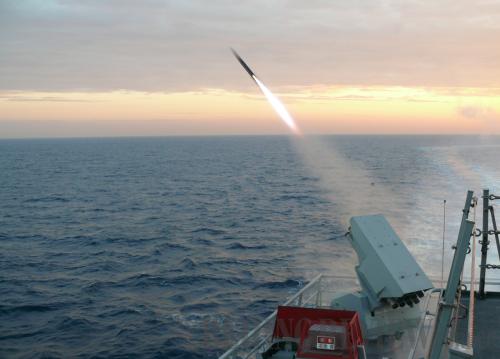| 
The United States and South Korea held a joint naval and air exercise, codenamed Invincible Spirit, in the Sea of Japan on July 25-28. The exercise, which involved 20 ships and submarines including the U.S. aircraft carrier USS George Washington, as well as 200 aircraft and 8,000 troops, was the biggest between the two countries since 1976.
Global concerns
 |
|
AIMING HIGH: The South Korean Navy's Choi Young KDX-II destroyer fires during the U.S.-South Korea joint military exercise in the Sea of Japan on July 27 (XINHUA) |
The joint military exercise has attracted a flood of attention among international media and in East Asian countries, especially in China.
First of all, the exercise was in response to the sinking of the South Korean warship Cheonan on March 26. South Korea claims that a North Korean submarine torpedoed the ship. Pyongyang denies that charge and has repeatedly asked to send its own team to examine the ship's wreckage.
The United States and South Korea intended to send a strong message to Pyongyang through this exercise.
The sinking of the Cheonan dealt a heavy blow to the South Korean people. In order to boost domestic morale, the South Korean Government emphasized that the U.S.-South Korea alliance was reliable and strong. That's why it kept releasing information on the exercise before it began.
Meanwhile, the exercise was delayed repeatedly due to the constraints of international relations. The countries also needed time to prepare for such a large-scale military exercise. The exercise, originally scheduled for June 7-11, was put off until June 21-24. Later, it was further delayed to July 25-28. The continuously changing date, along with other information, aroused people's interest.
Initially, the South Korean Government announced the exercise was to be held in the Yellow Sea. For China, the Yellow Sea is a sensitive place crucial to its security. It is also associated with many painful memories.
The Yellow Sea was a battleground in the Sino-Japanese War (1894-95), the Russo-Japanese War (1904-05) and World War I (1914-18). In those waters, Japan defeated the Beiyang Fleet, one of the modernized naval fleets in the late Qing Dynasty (1644-1911), and destroyed Russia's expedition fleet. It also repeatedly took advantage of the area for landing operations in Shandong Province.
That's why the Chinese people, media, military and government all expressed strong resentment and opposition when they heard the military exercise was to be held in the Yellow Sea.
China firmly opposes foreign warships and military aircraft entering the Yellow Sea and other coastal waters of China to engage in activities affecting China's security and interests, said Chinese Foreign Minister Yang Jiechi, while meeting with U.S. Secretary of State Hillary Clinton in Hanoi, Viet Nam, on July 23. China urged the relevant parties to exercise restraint and to refrain from acts that might damage bilateral ties and escalate tension in the region.
| 